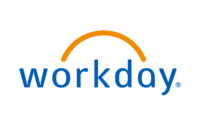From Data to Defense: How AI and Governance are Rewriting the Rules of Compliance and Security
As federal contractors face growing scrutiny and evolving threats, data isn’t just a byproduct of business – it is the business. But as organizations collect and store more of it, the challenges around protecting, managing, and using that data have grown more complex.
Enter artificial intelligence.
When paired with a well-defined data governance program, AI is no longer just a buzzword—it’s a force multiplier. From uncovering blind spots in compliance efforts to tightening security controls and streamlining operations, AI is reshaping how companies manage risk, enable growth, and meet regulatory demands.
This blog unpacks how data governance, compliance, and AI, intersect in practical terms – exploring key concepts, strategies and emerging technologies that help build defensible frameworks, reduce risk and meet tightening federal requirements head-on.
What Is Data Governance – And Why Does it Matter?
At its core, data governance is about control: putting in place the policies, roles, and standards that ensure data is accurate, secure, and usable. According to the Federal Data Strategy, it means treating data as a strategic asset—one that supports mission-critical functions while protecting integrity and privacy.
Without governance, even the most advanced analytics or security tools are built on sand. Poorly classified data, inconsistent labels, or undefined ownership leads to inefficiencies at best—and regulatory failure at worst.
Done right, governance becomes the foundation for everything else: compliance, security, business intelligence, and, increasingly, AI.
Why Every Business – Not Just the Big Ones – Needs Governance
Think data governance is just for Fortune 500 companies? Think again.
Whether you’re a startup, a mid-sized defense contractor, or a global enterprise, the benefits are the same:
- Consistency and Accuracy: Standardized practices ensure reliable data across departments.
- Business Intelligence that Delivers: Structured data makes advanced analytics meaningful and actionable.
- Risk Mitigation and Compliance: Governance mitigates the risk of data breaches, non-compliance, and operational missteps. Proper governance enforces access only for authorized users. With strong controls, audit logs, and monitoring in place, it becomes a critical defense against cyber threats and regulatory risk.
The bottom line: governance builds trust. And trust is the currency that fuels partnerships, investment, and sustainable growth.
How Data Governance Relates to Security, Compliance and Business Intelligence
To better understand the role of governance, visualize it as a three-legged stool supported by security, compliance, and business intelligence.
Each leg—security, compliance, and business intelligence—supports the others.
- Security: Access controls, monitoring policies, and data protection practices prevent unauthorized exposure.
- Compliance: From HIPAA to CMMC, governance ensures your organization’s policies align with regulatory demands.
- BI and AI Readiness: Clean, organized data is essential for meaningful insights and successful AI implementation.
Remove one pillar and the entire structure wobbles.
Laying the Groundwork: 5 Steps to Strong Governance
Building a governance program doesn’t have to mean bureaucracy. It starts with clarity and scales with purpose.
- Define Clear Objectives: Define what you want governance to accomplish—whether it’s risk reduction, data standardization, or enabling automation.
- Develop and Enforce Policies and Procedures: Document classification standards, retention policies, and access protocols. Make sure they evolve as your organization does.
- Designate Ownership: Assign stewards who are accountable for implementing and overseeing governance on the ground.
- Adopt Modern Tools: Leverage platforms like Microsoft Purview to automate classification, auditing, and lineage tracking.
- Audit and Adapt: Governance isn’t “set it and forget it.” Continuous monitoring keeps it effective—and compliant.
Laying this foundation ensures your organization is better protected and well-positioned to scale its governance strategy as business needs evolve.
Keys to Operationalizing Strong Data Governance
Establishing an effective data governance framework takes intentional effort but is achievable with the right focus. Here are the primary considerations for getting started and maintaining a program over time;
- Define The Mission: Data Classification and Labeling
What’s the goal—reducing risk, enabling analytics, meeting DFARS 7012 and CMMC requirements? Clear objectives shape everything else. Determine what governance will achieve for your organization.
- Write it Down.
Develop Policies and Procedures around data ownership, classification (e.g., sensitive vs. public), and retention. Update as laws and your companies’ needs evolve.
- Assign Ownership
Appoint data stewards to oversee compliance and operationalize governance policies. Clear lines of responsibility ensure accountability.
- Use Modern Tools
Leverage governance platforms like Microsoft Purview to automate classification, track lineage, and audit usage to improve data discovery, classification, and auditing. Implementing advanced tooling saves time and reduces manual errors.
- Inspect What You Expect
Monitor Continuously. Audit regularly to ensure governance policies are applied consistently. Conduct audits to uncover vulnerabilities, such as unauthorized access, and address them before regulators or adversaries do.
Laying this foundation ensures your organization is better protected and well-positioned to scale its governance strategy as business needs evolve.
Where AI Strengthens—and Tests—Governance
AI is accelerating compliance and security – but it’s also exposing gaps in governance practices that may have remained unnoticed for years. Businesses are now using AI to uncover blind spots and address long-standing governance challenges.
What AI Unveils
AI often reveals where companies have failed to set proper data controls. For instance, poor retention policies or inconsistent labeling can result in duplicate, outdated, or incorrect data. By shining a light on these inefficiencies, AI pushes organizations to clean and organize their data, transforming reactive approaches into sustainable, proactive ones.
Enhancing Processes
AI brings speed and precision to what used to be manual and error prone. Automated anomaly detection, predictive analytics, and data lineage tracking help organizations spot risks early, classify data at scale, and trace how it moved across systems. When applied well, AI enhances governance to achieve precision and scalability that manual processes can’t match.
How To Put AI to Work in Data Governance
To get real value from AI, organizations need more than just tools—they need deliberate integration. When paired with strong governance, AI becomes a force multiplier across five key areas:
- Data Classification and Labeling: AI can automatically classify and label sensitive data (e.g., Controlled Unclassified Information or Personally Identifiable Information) and apply appropriate protections. Platforms with trainable classifiers, like Microsoft Purview, streamline this process.
- Risk Detection and Monitoring: AI-powered systems flag anomalies, such as unauthorized access attempts, and trigger alerts in real time. This strengthens the overall monitoring system for compliance violations.
- Data Lineage Tracking: AI provides visibility into how data flows throughout an organization. Tracking this lineage mitigates risks related to data breaches, compliance gaps, and outdated information.
- Improved Insights with Clean Data: AI flourishes when trained on “good data.” Organizations need to clean their datasets and maintain governance so that AI tools, like Copilot, can deliver accurate results. Consistently governed data leads to trustworthy AI outputs and enhances decision-making capabilities.
- Proactive Governance: By eliminating “set it and forget it” governance models, AI enables ongoing audits and controls, ensuring programs remain relevant even as regulations evolve.
To succeed in turning AI into an ally requires more than just data – it needs direction. That means aligning smart tools with clear ownership, ethical practices and transparent use. Transparency in AI’s role, paired with robust governance frameworks, is key to its success.
Take Action to Future-Proof Your Data Governance
Data governance and AI are no longer optional in today’s data-driven economy; they are essential for compliance, security, and staying competitive. Together, these strategies empower companies to unlock the full value of their data while operating responsibly and securely.
Want to learn how to integrate AI into your data governance framework effectively? Watch the full webinar on-demand today to gain expert insights from industry leaders at NeoSystems and Microsoft to strengthen your company’s compliance efforts.












